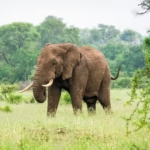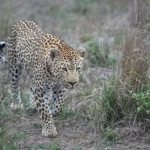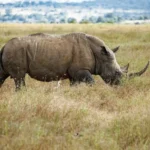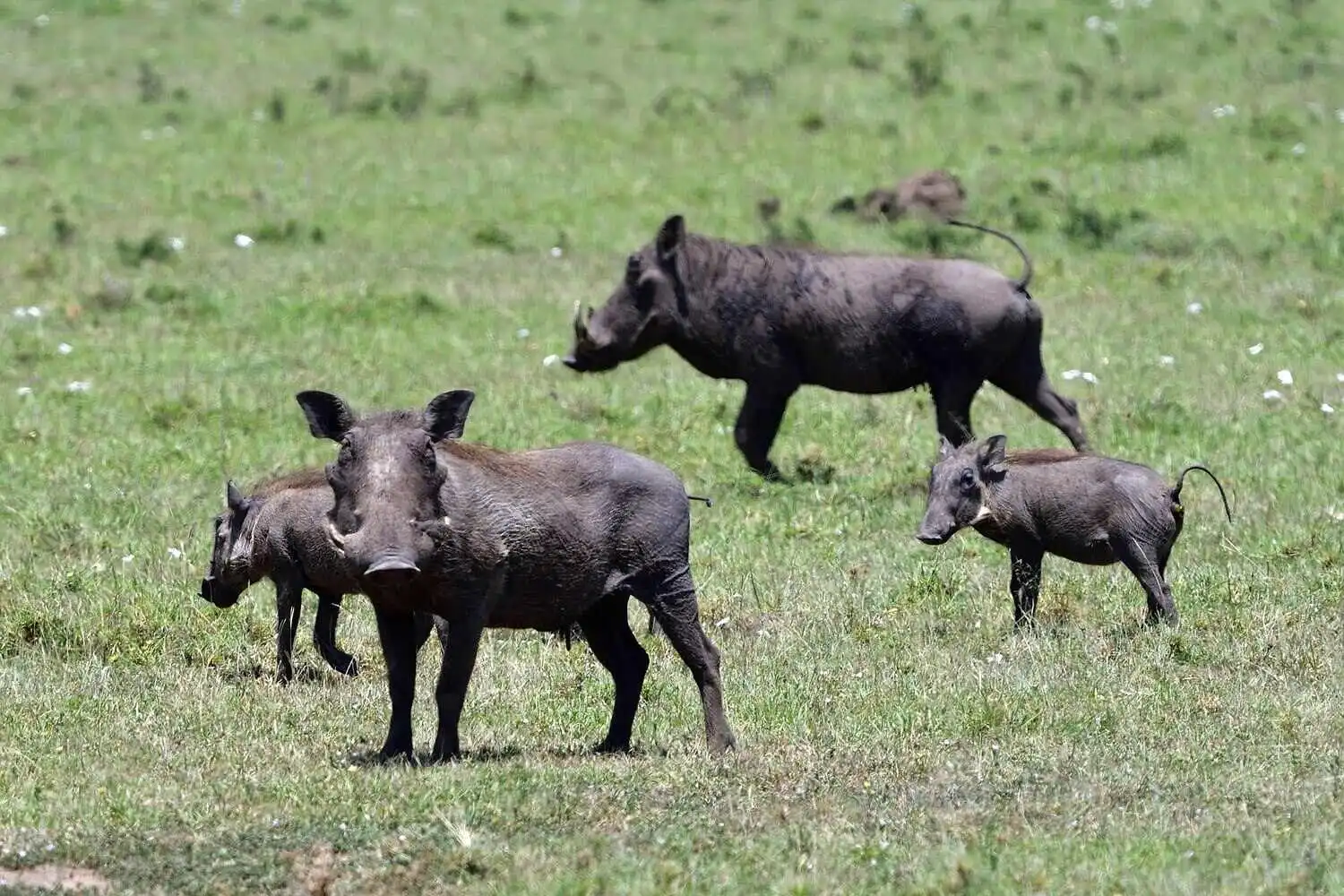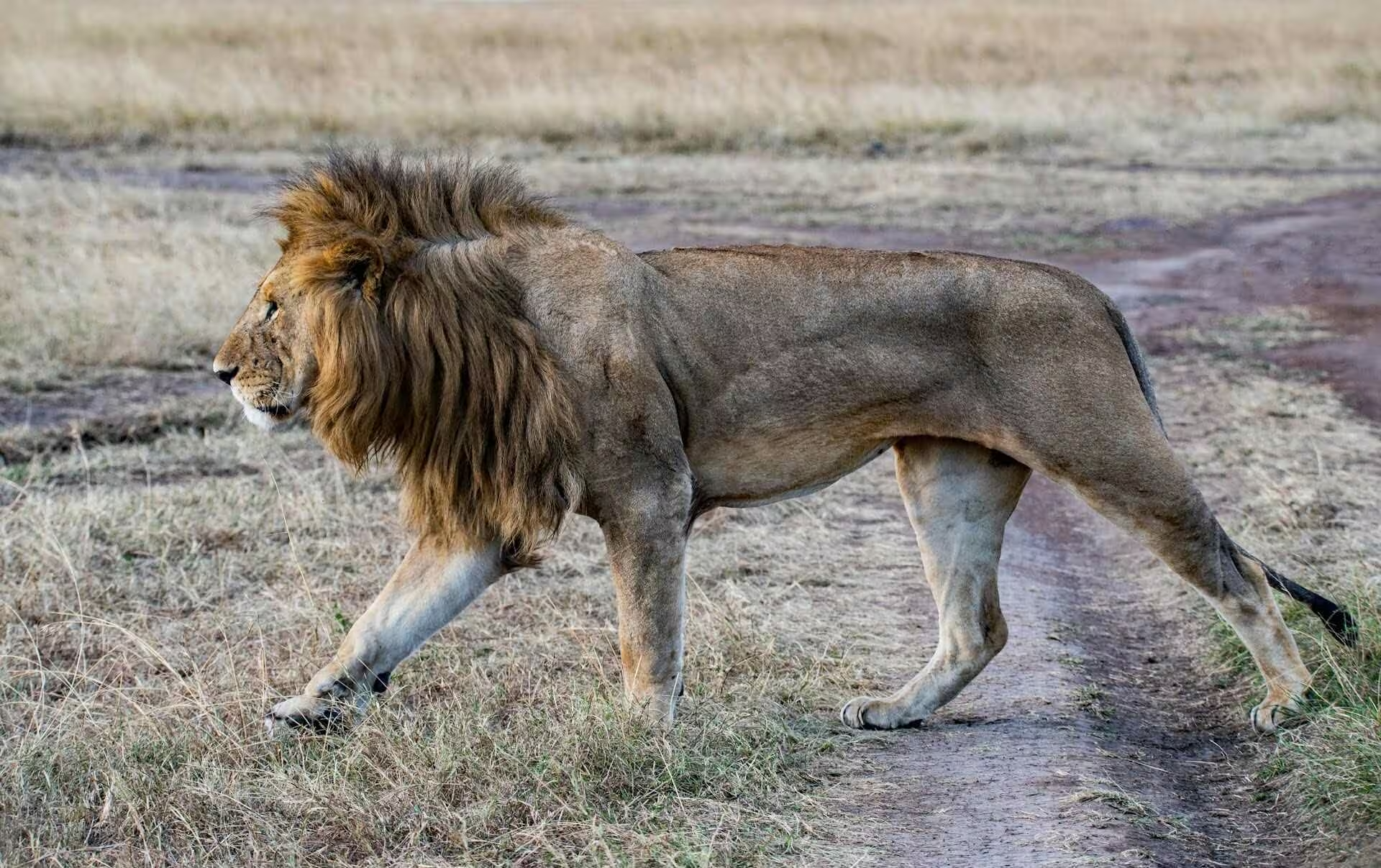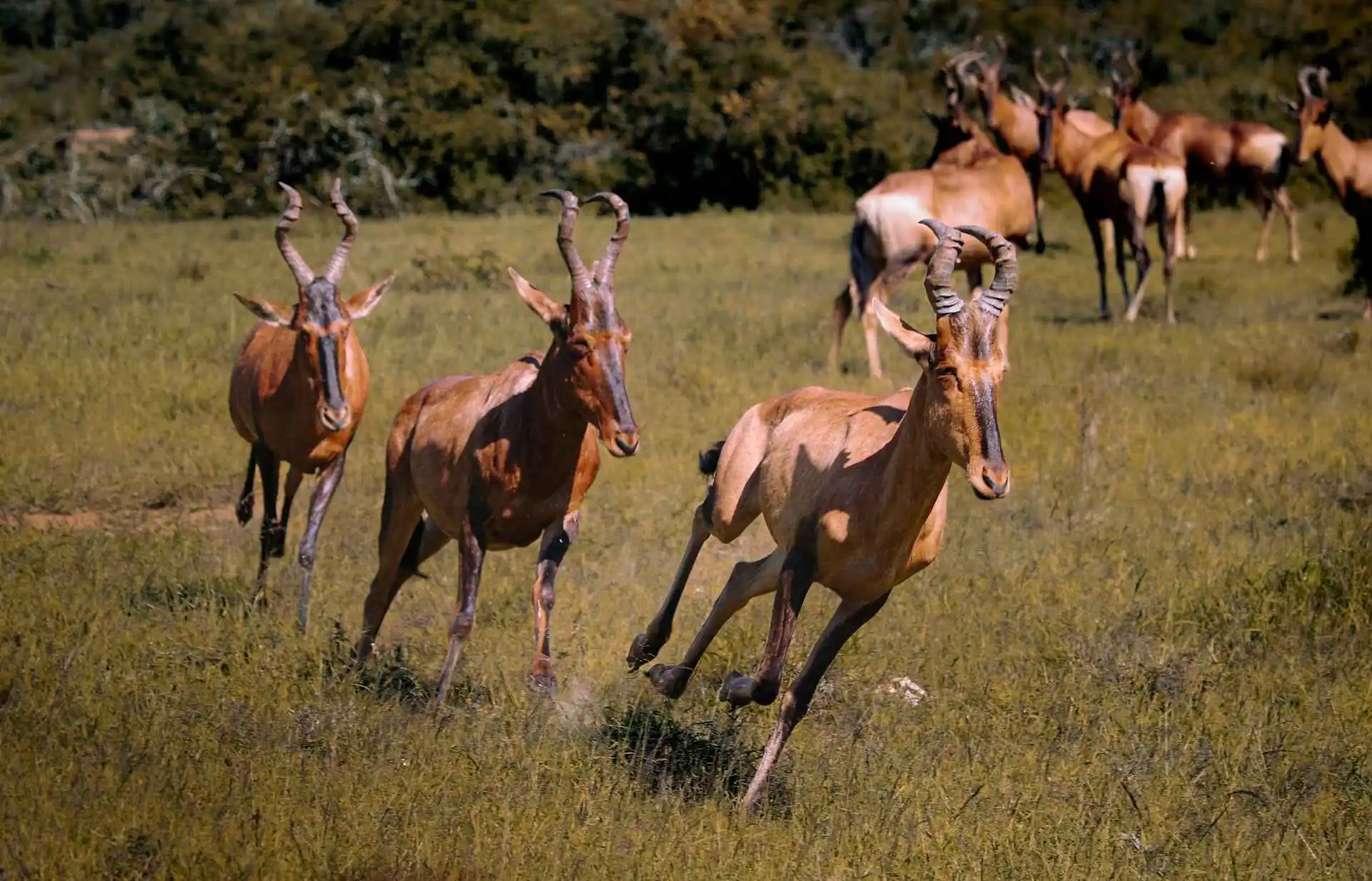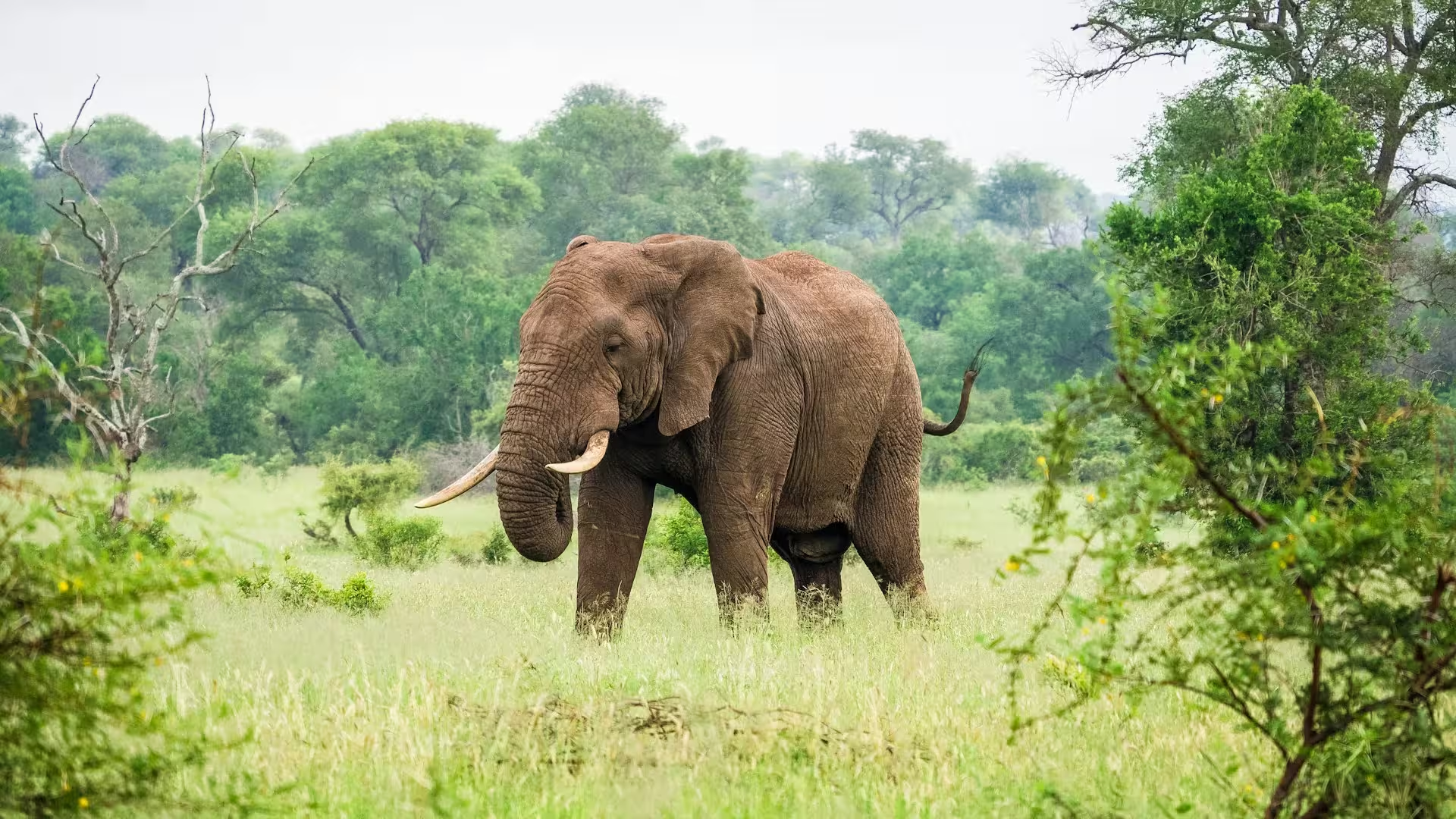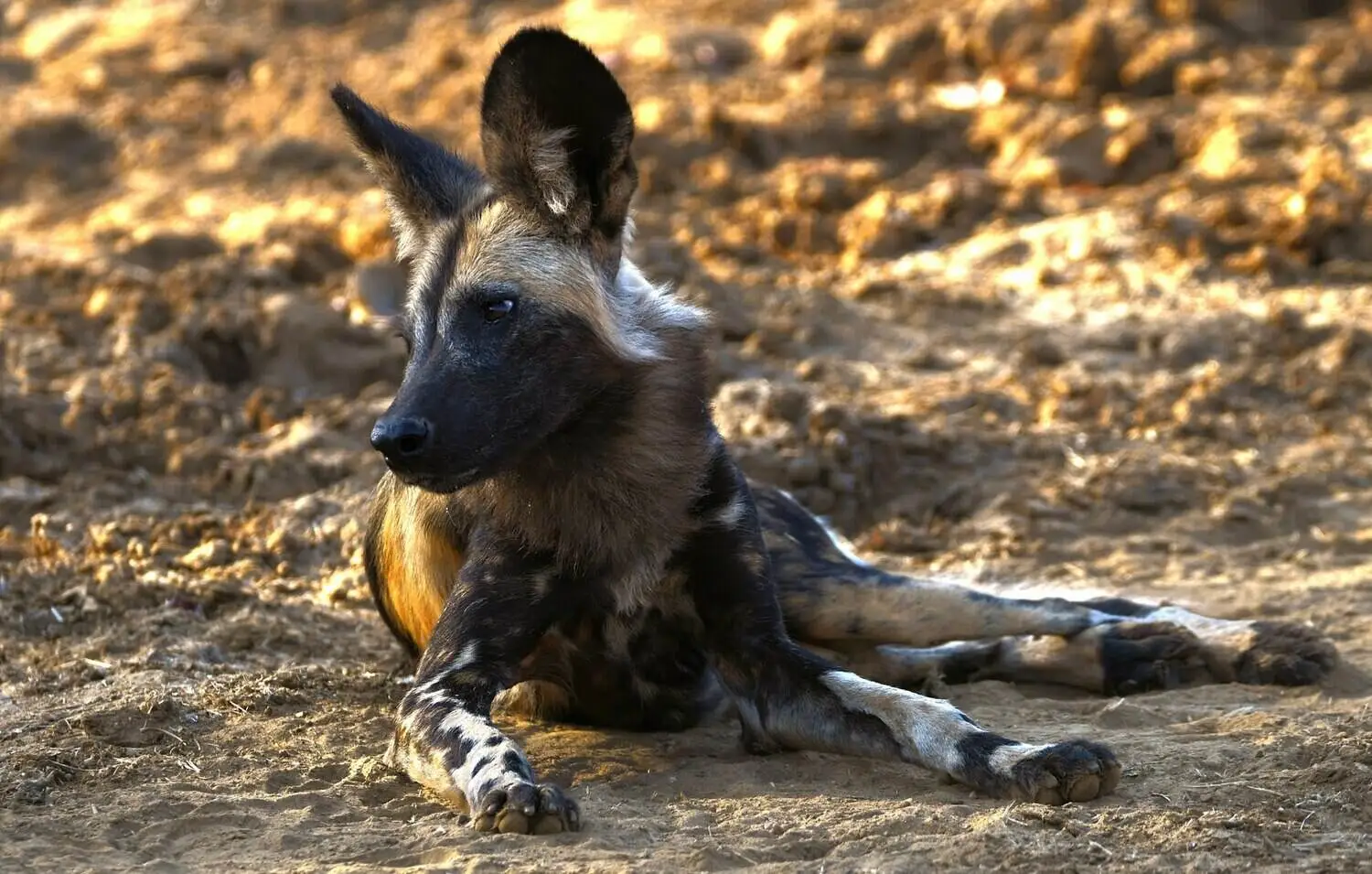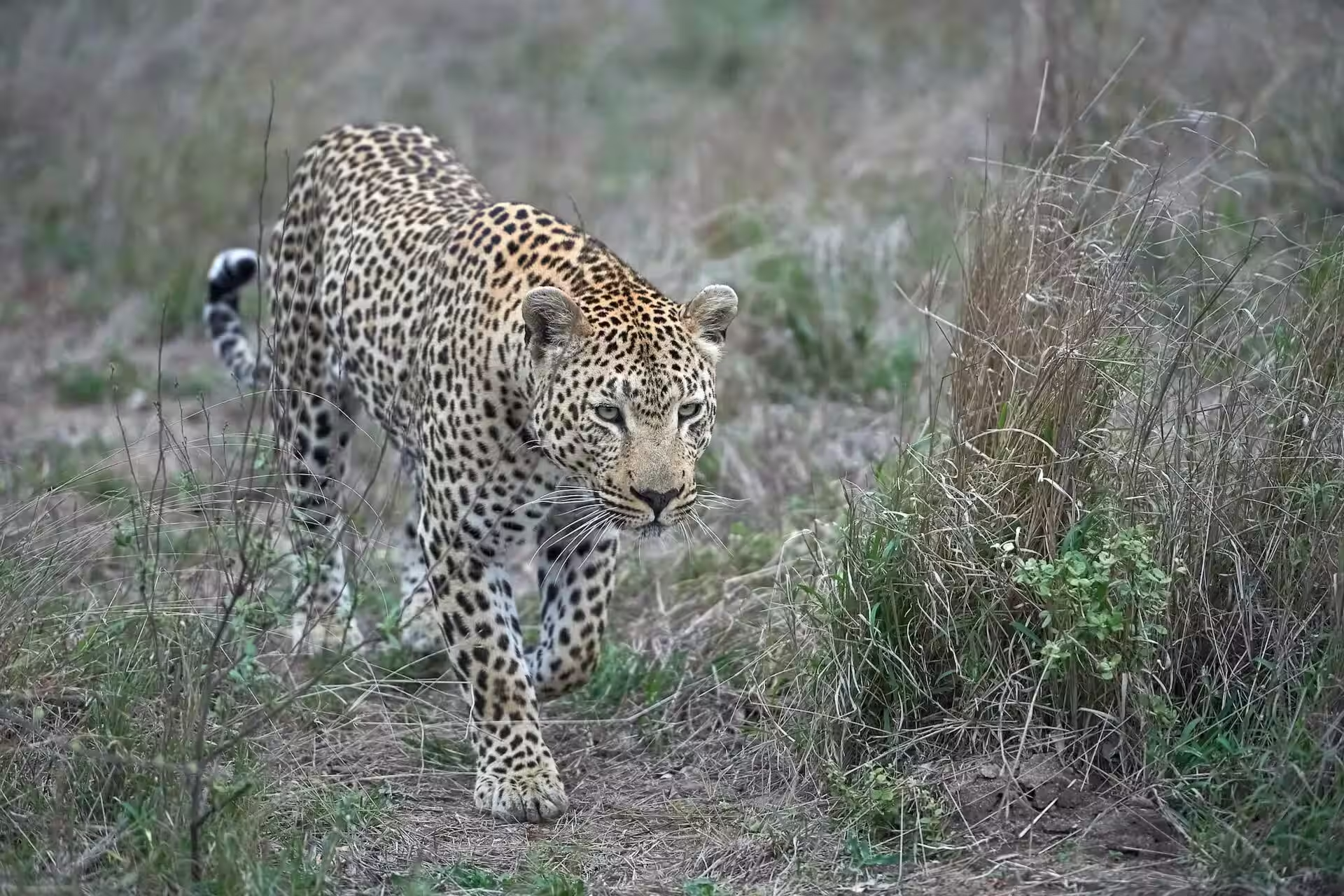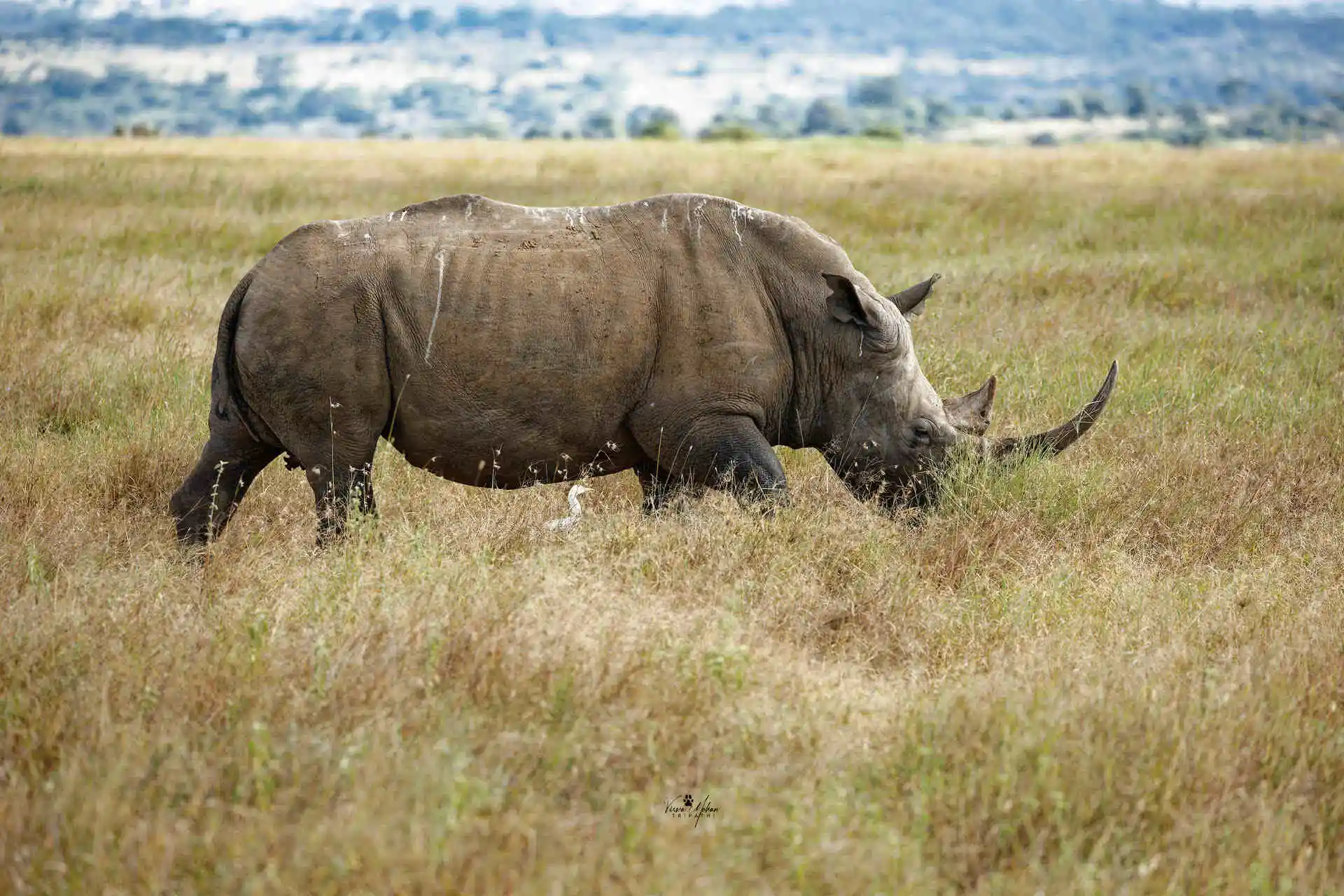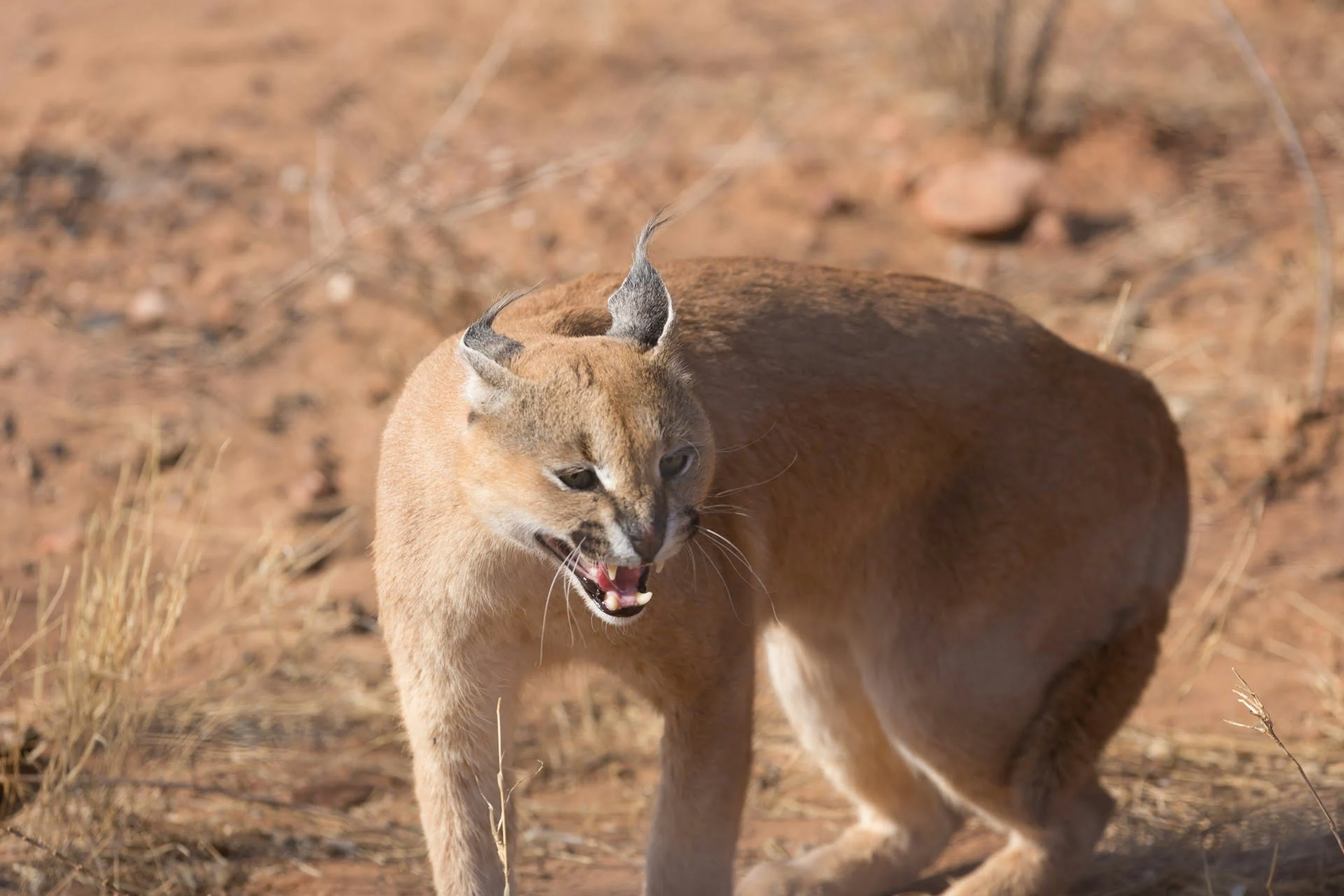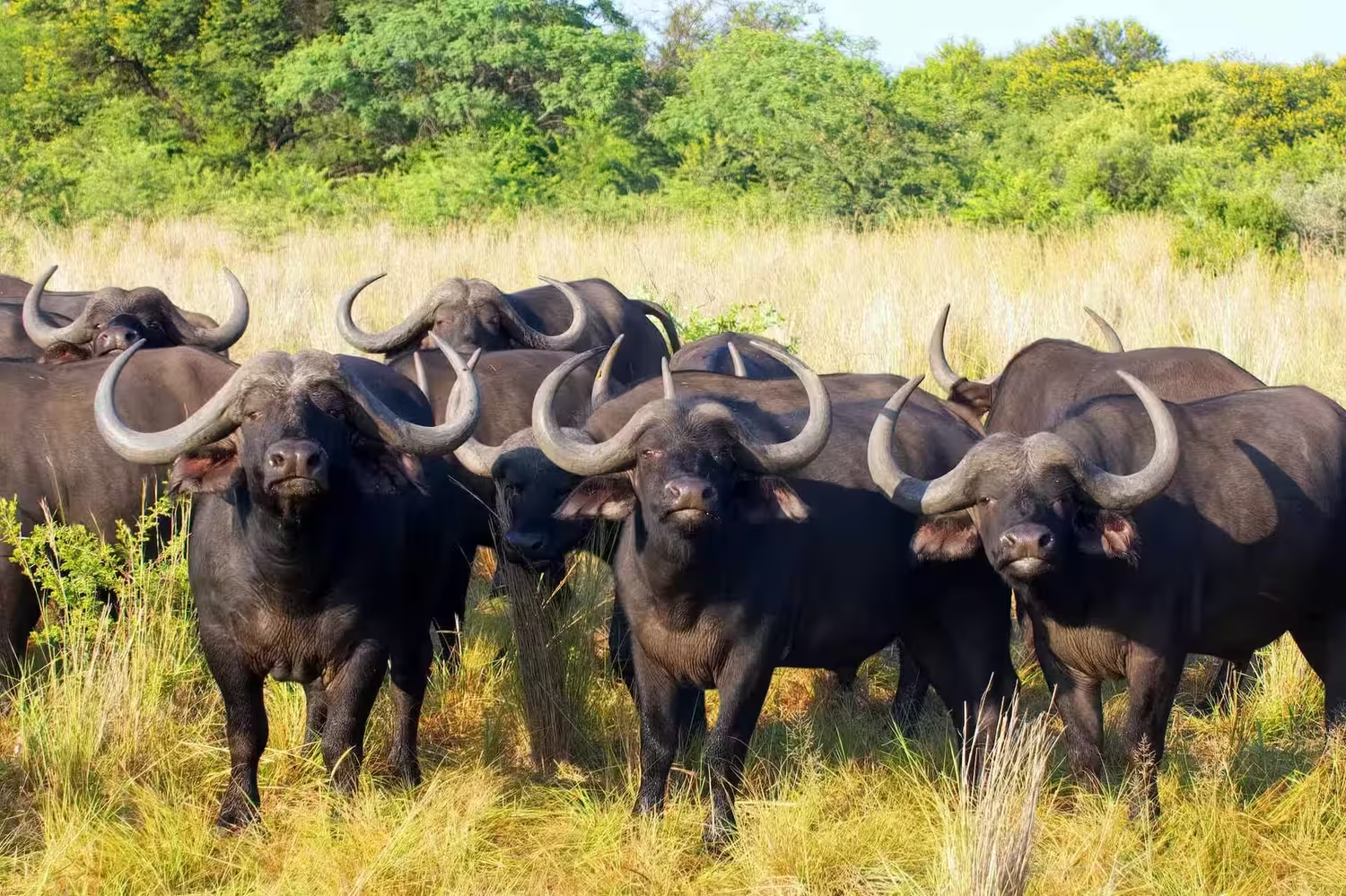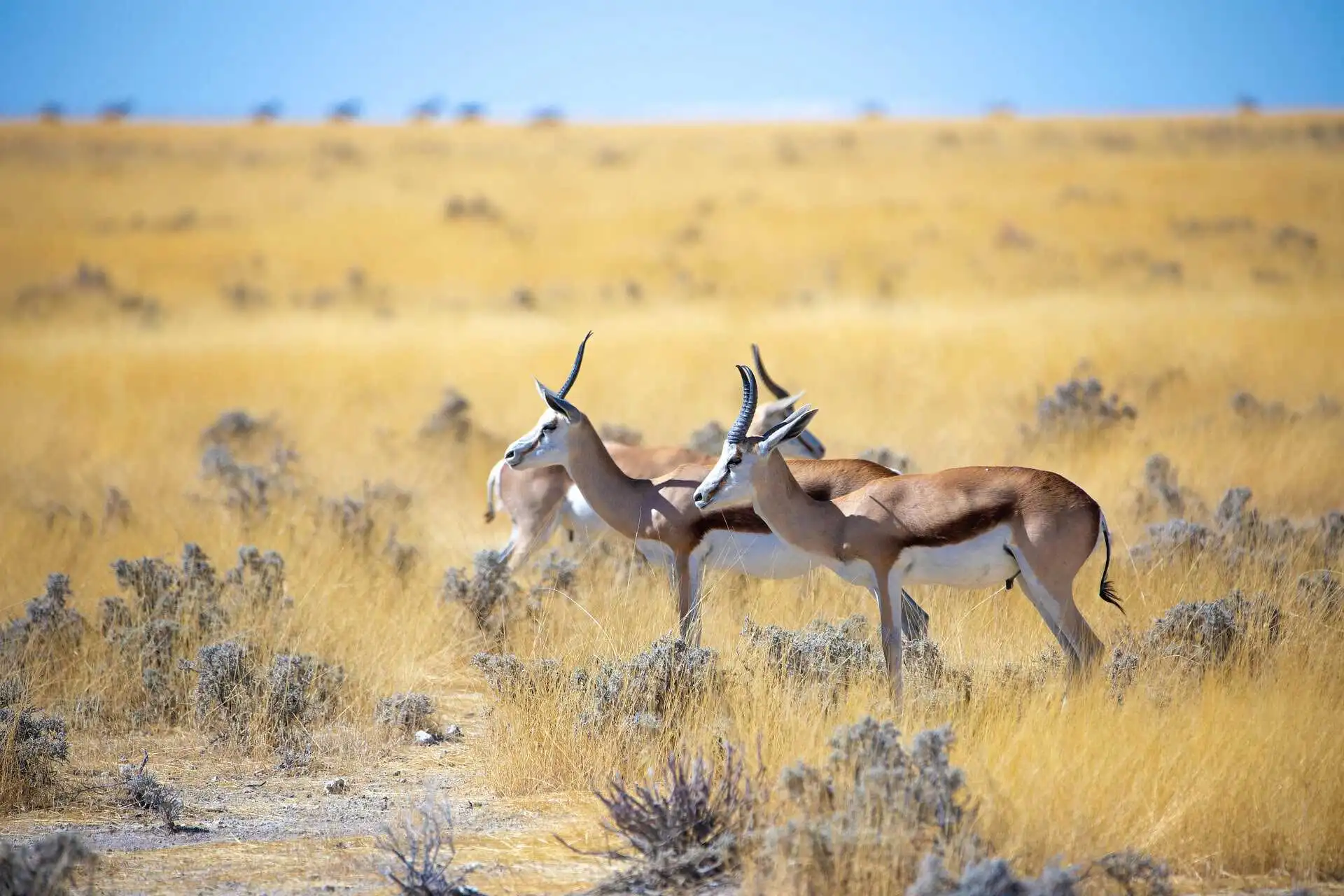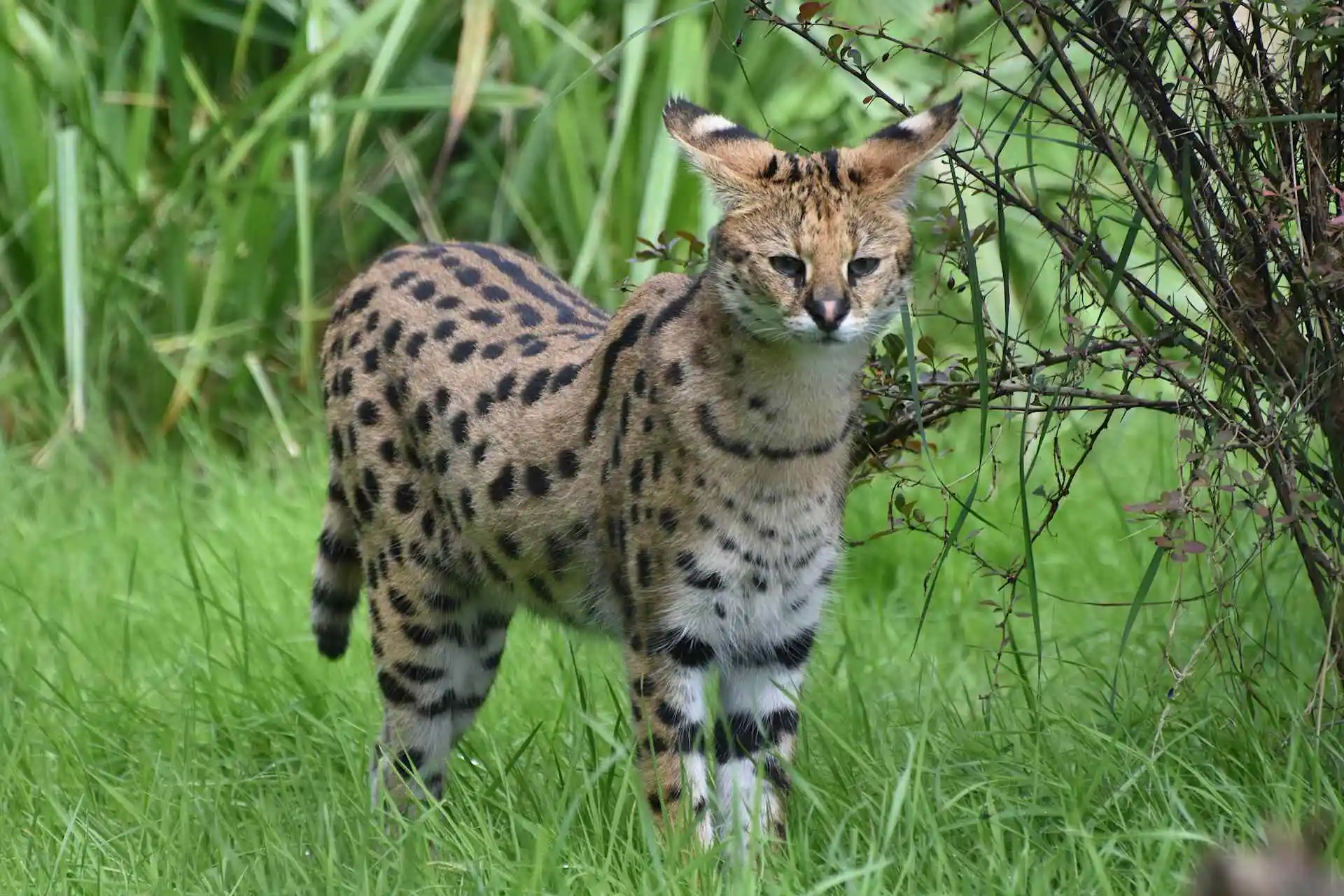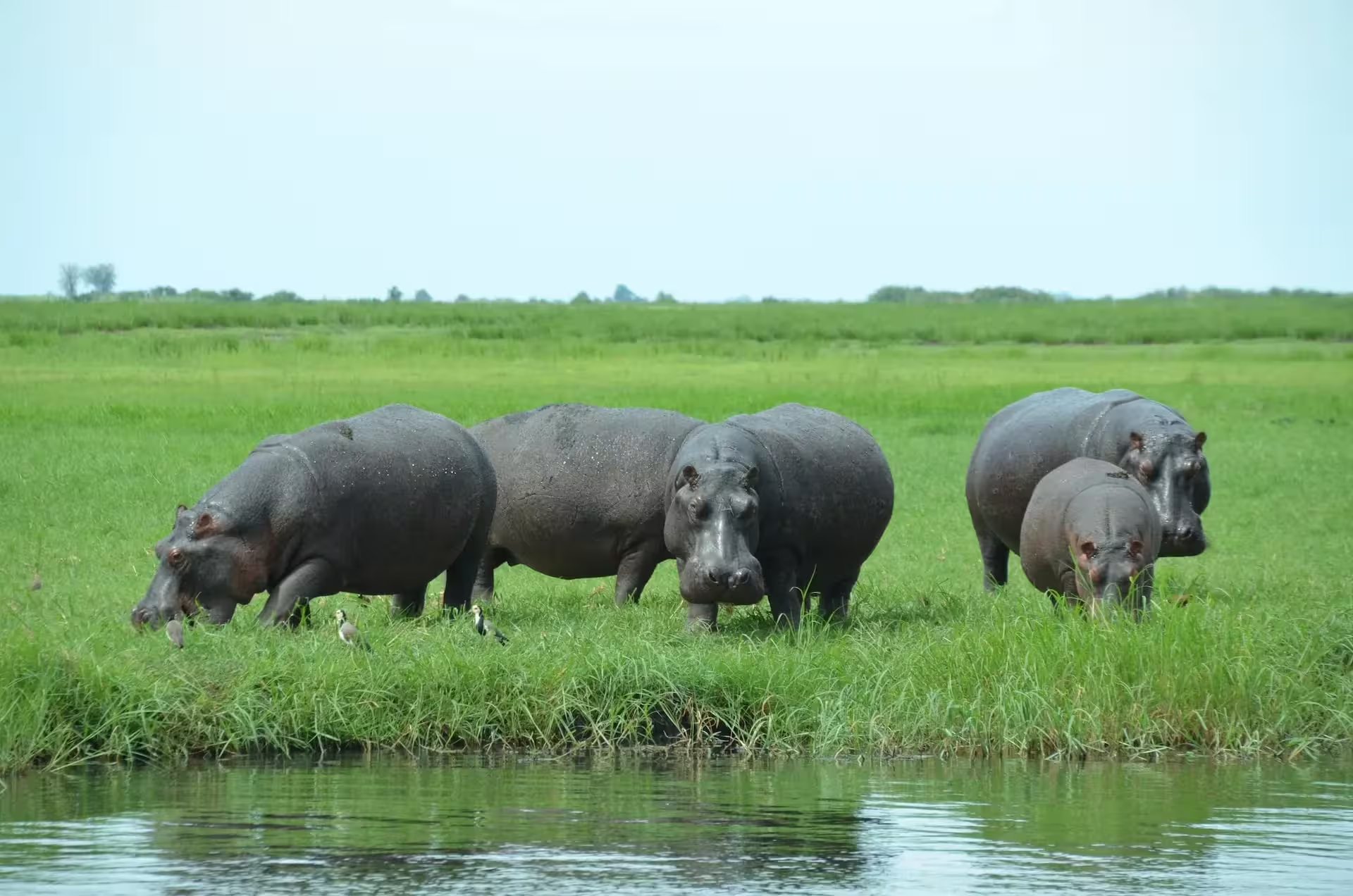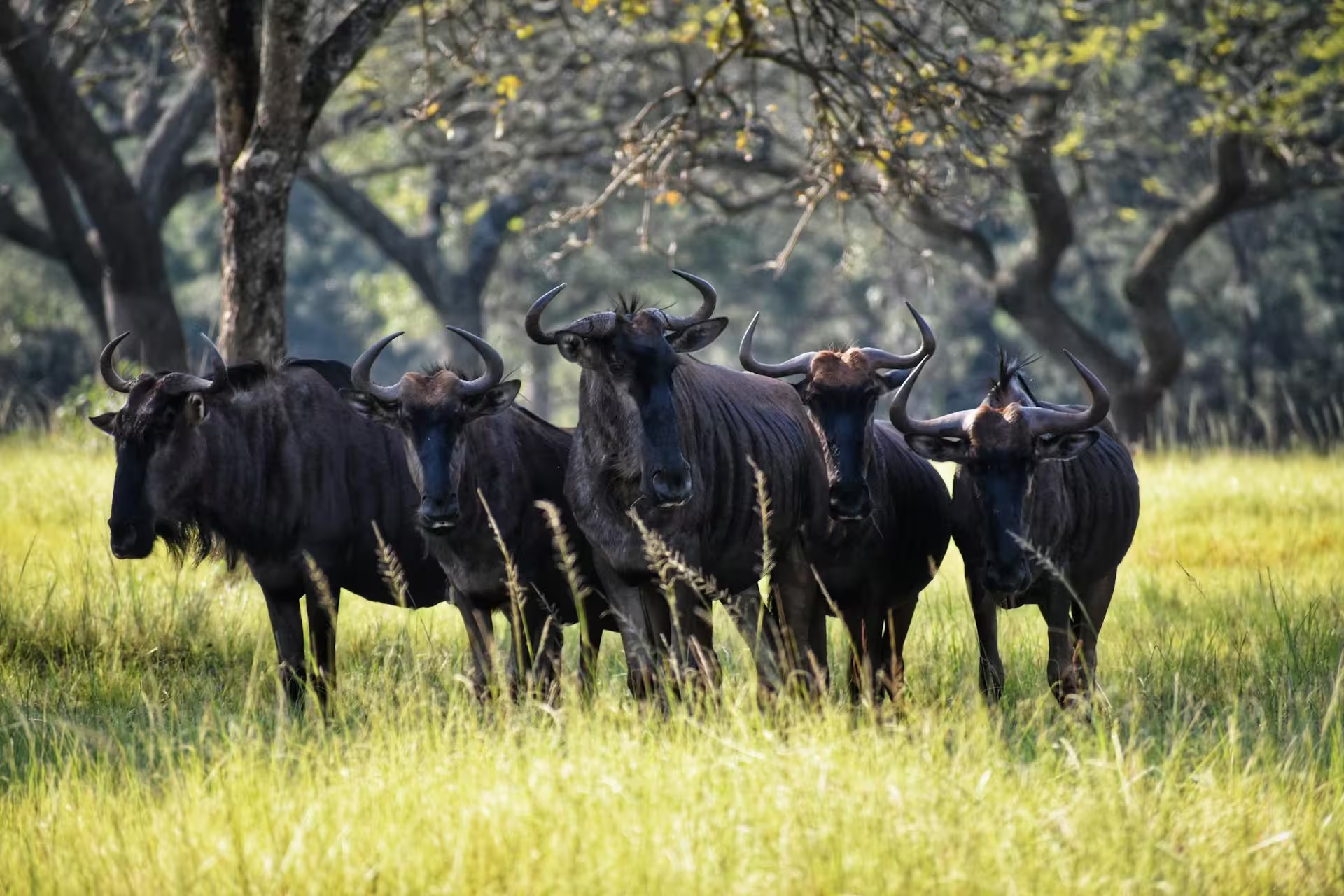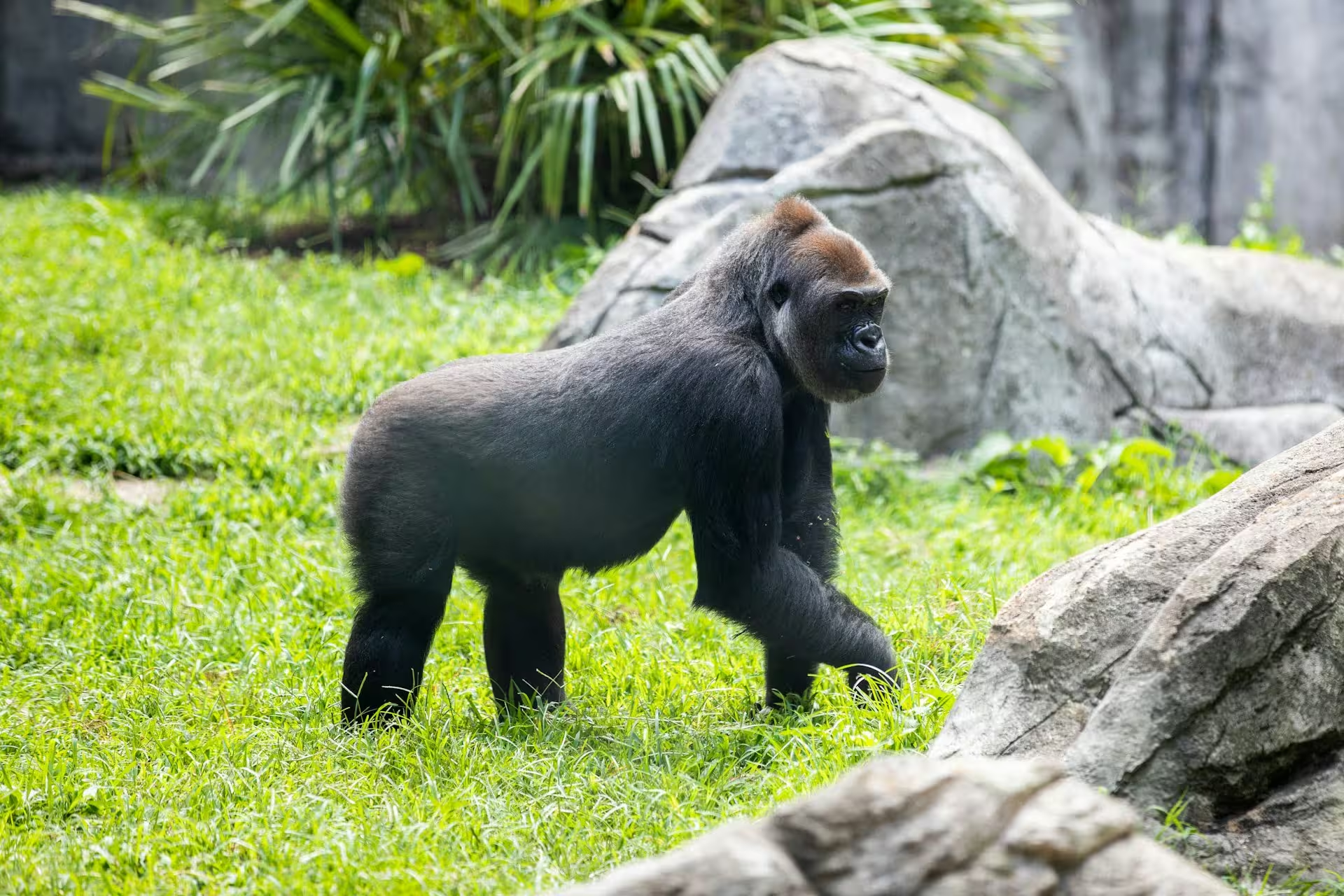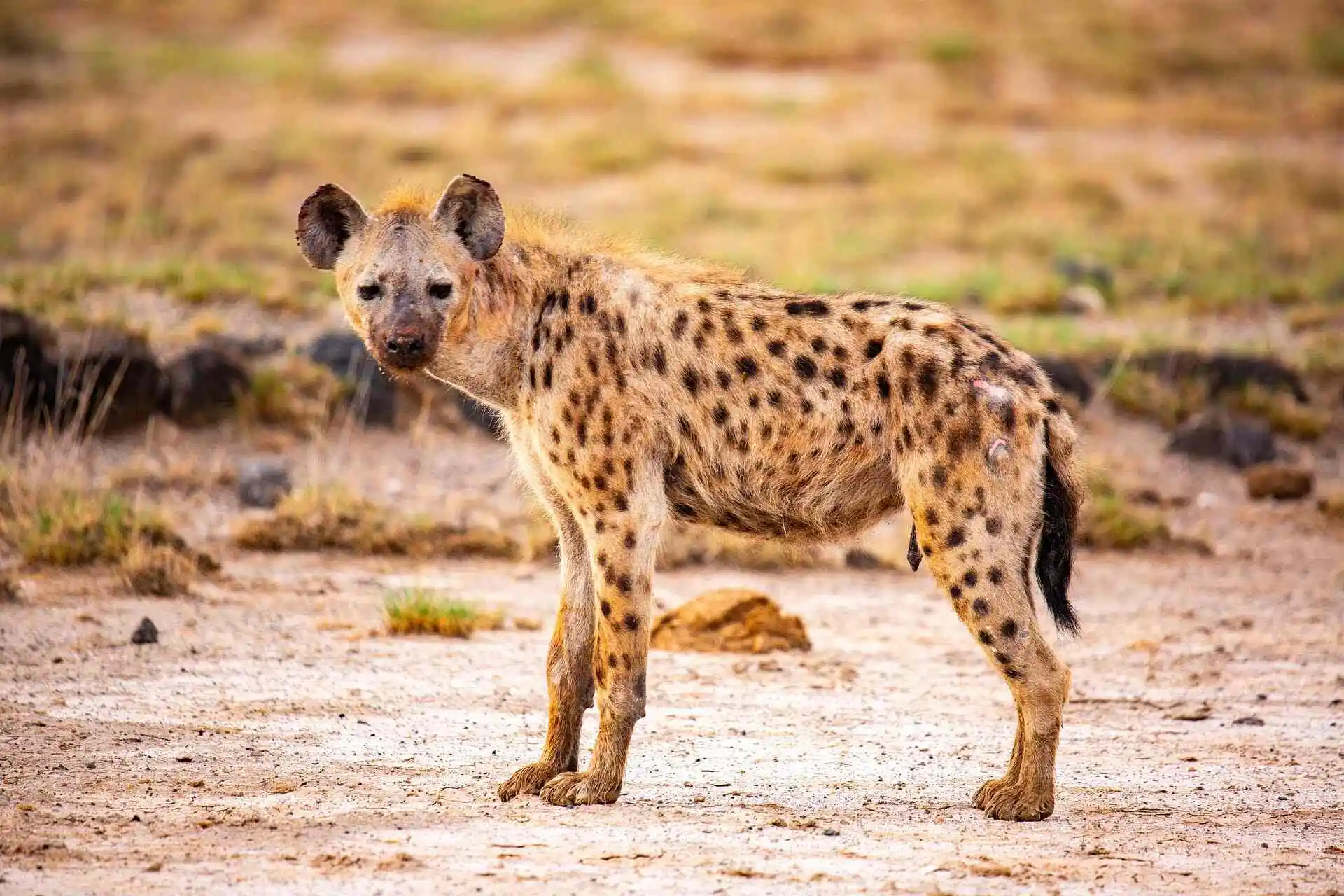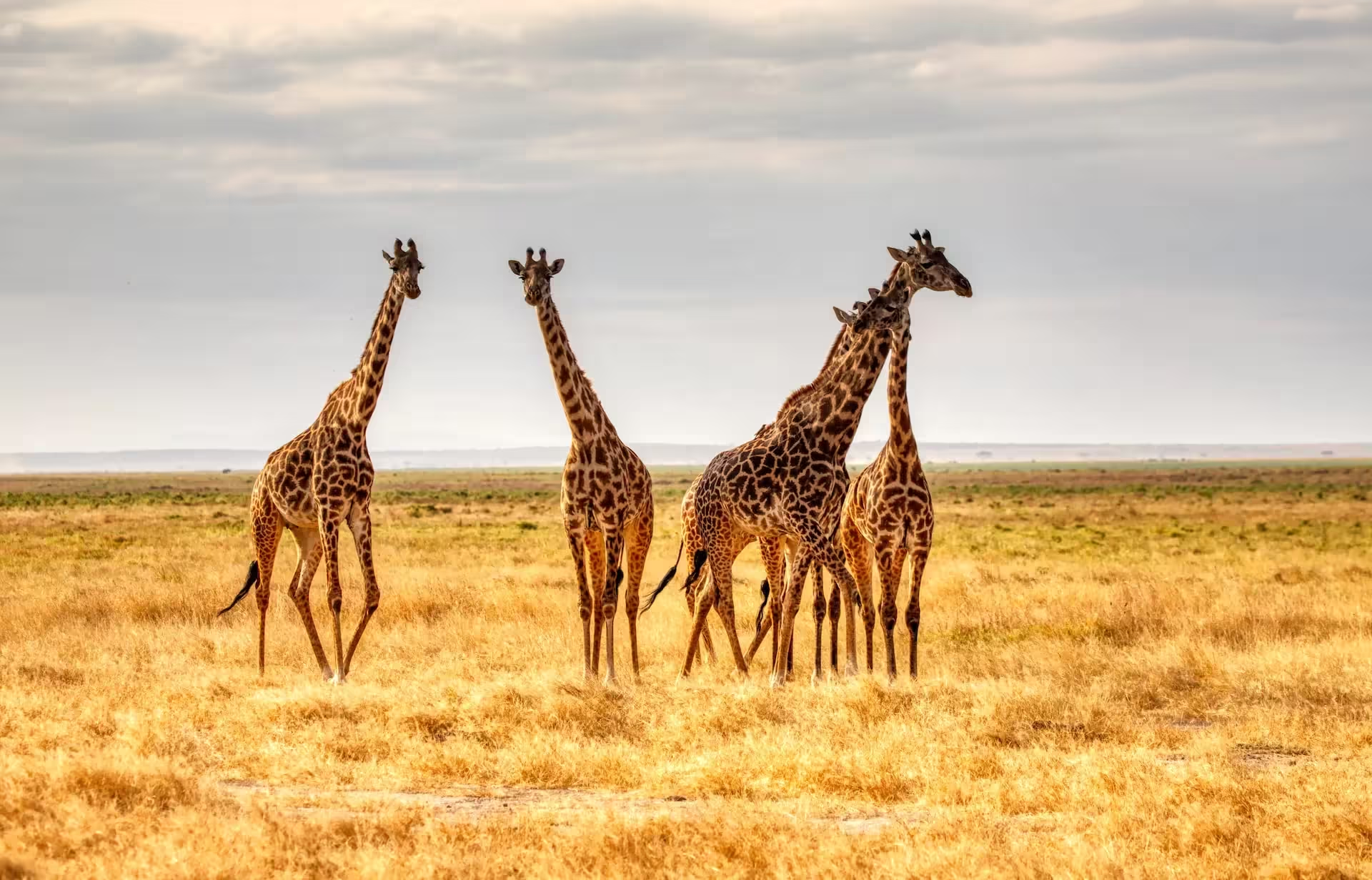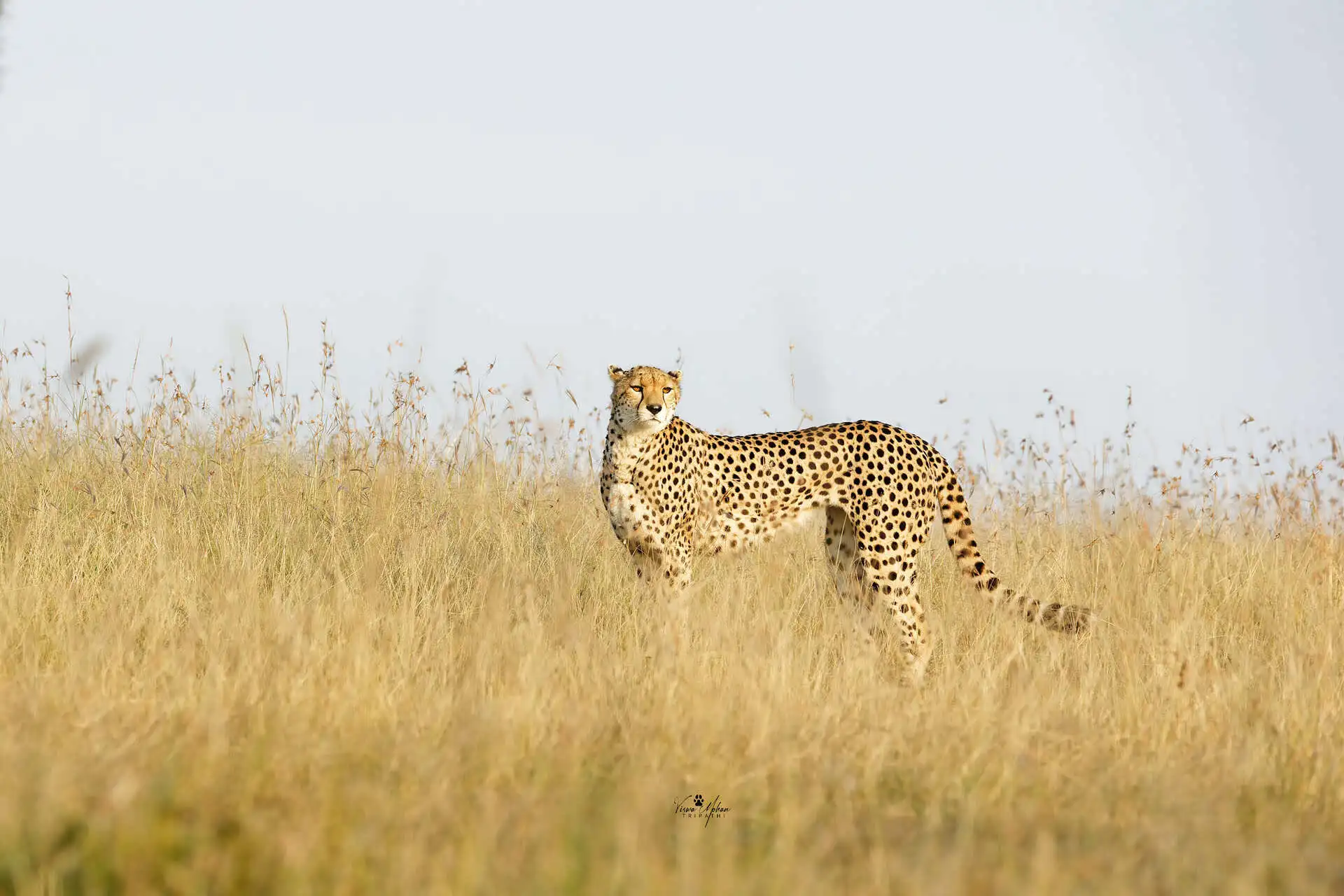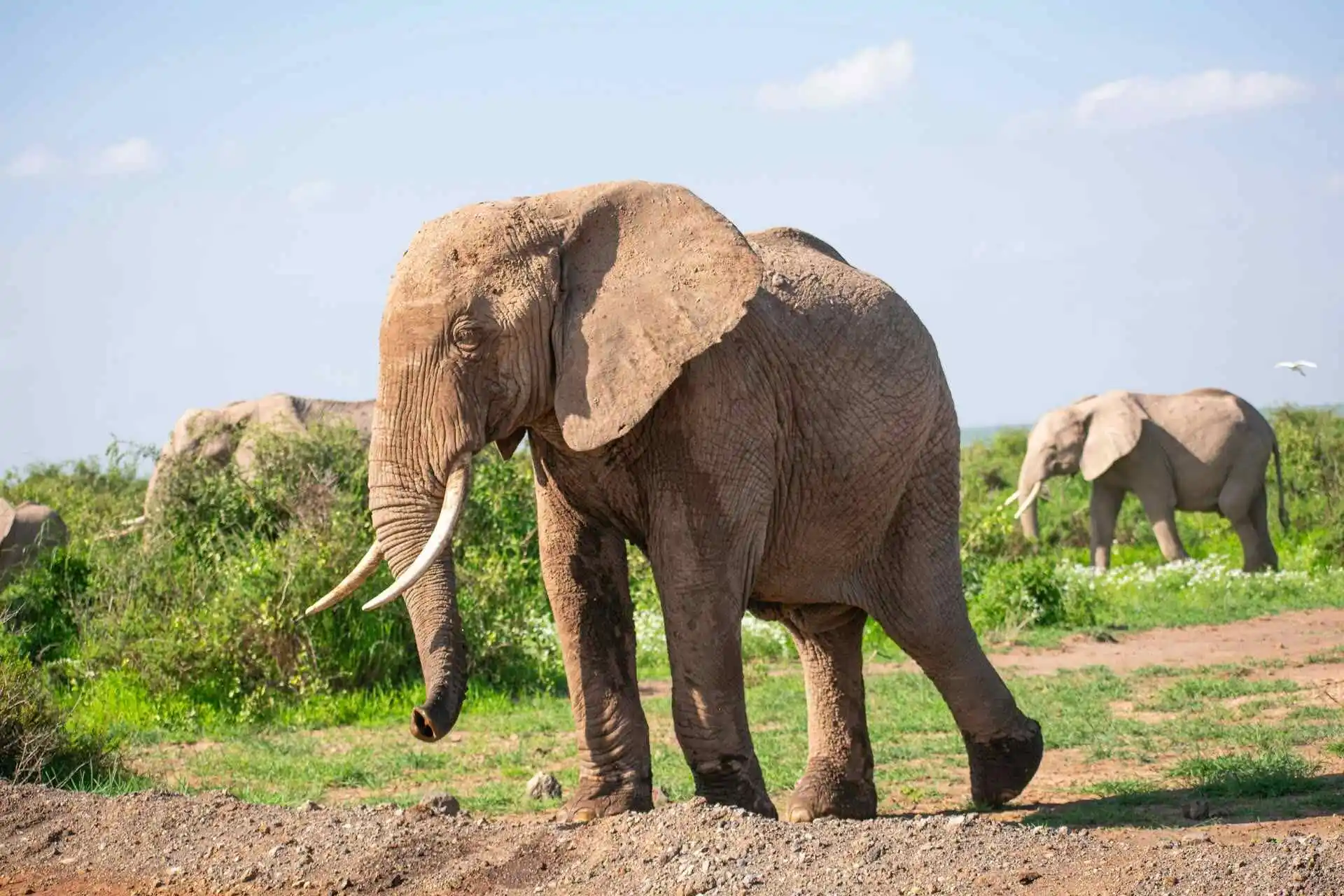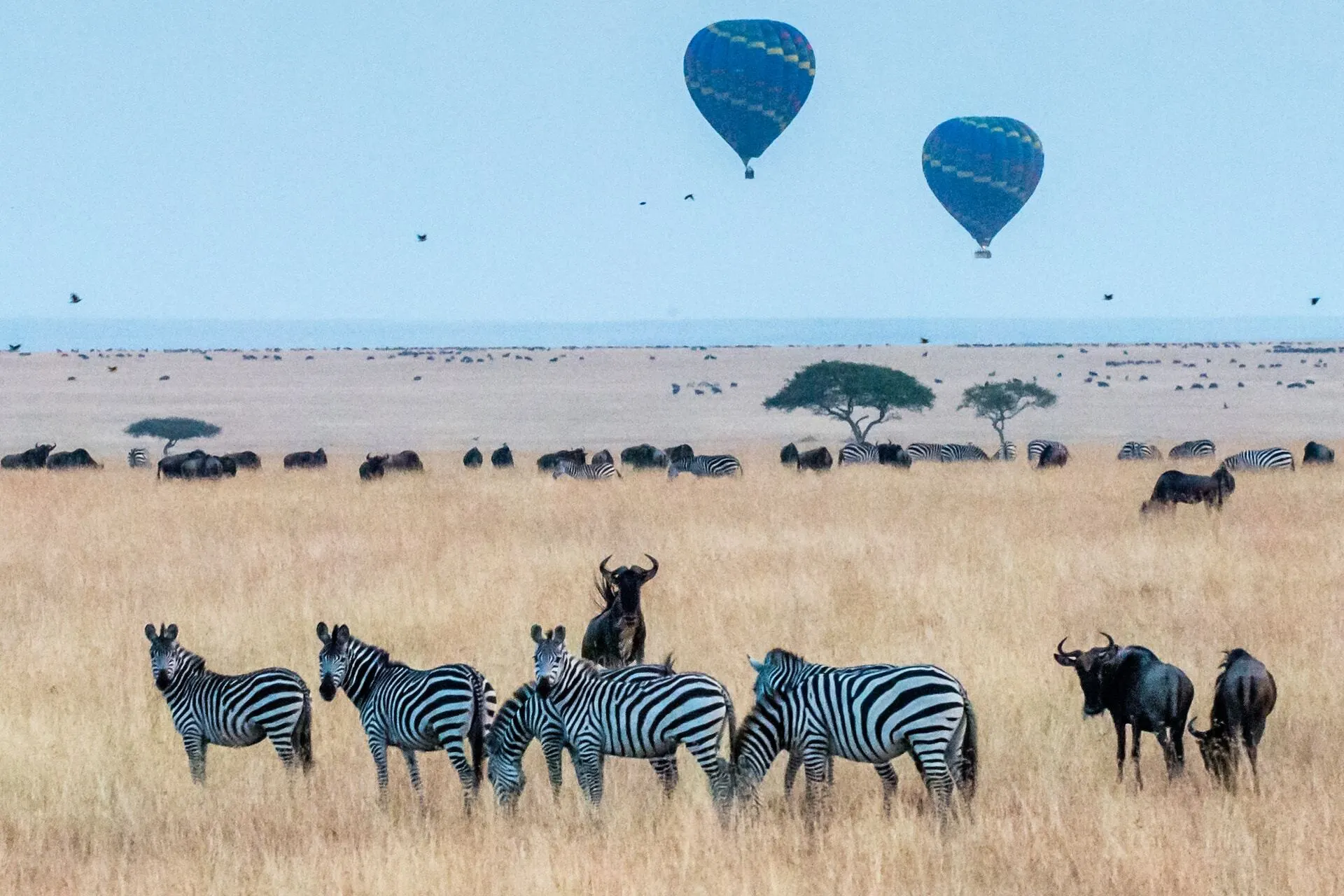How does Gorilla look like ?
Gorillas in Africa are easy to recognize because of their strong and solid build. Their fur can be black, brown, or gray, and they often look even more powerful up close. Adult males usually have a raised ridge on top of their heads, which stands out as they grow older.
They have wide chests, thick arms, and strong hands and feet. Their thumbs work just like ours, which helps them grip food and move around. Their faces have no fur, and their deep, dark eyes give them a calm but alert look.
Older males are called silverbacks because the hair on their backs turns gray with age. Most gorillas stay on the ground and walk using their knuckles, but they can climb when needed.
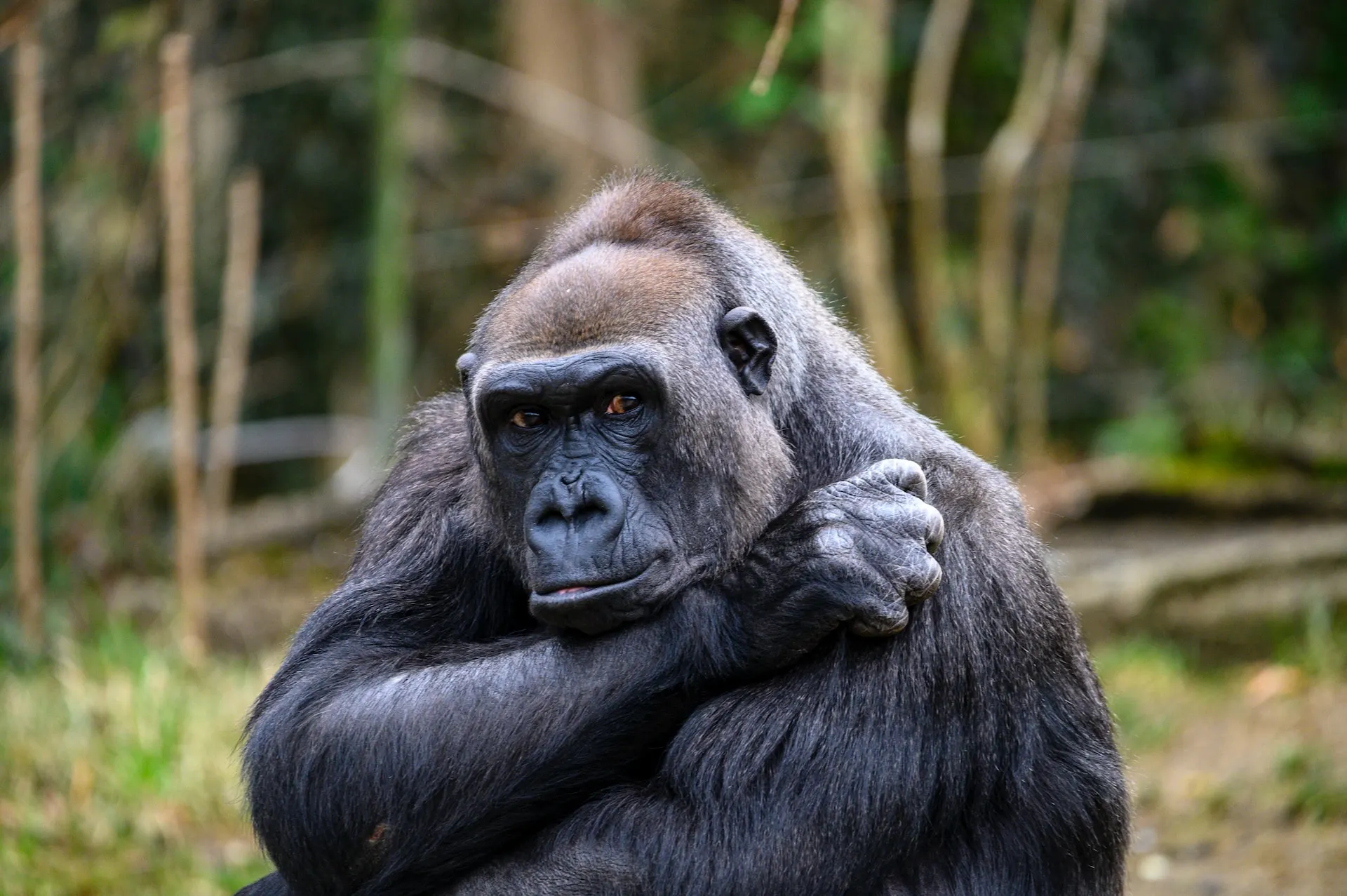
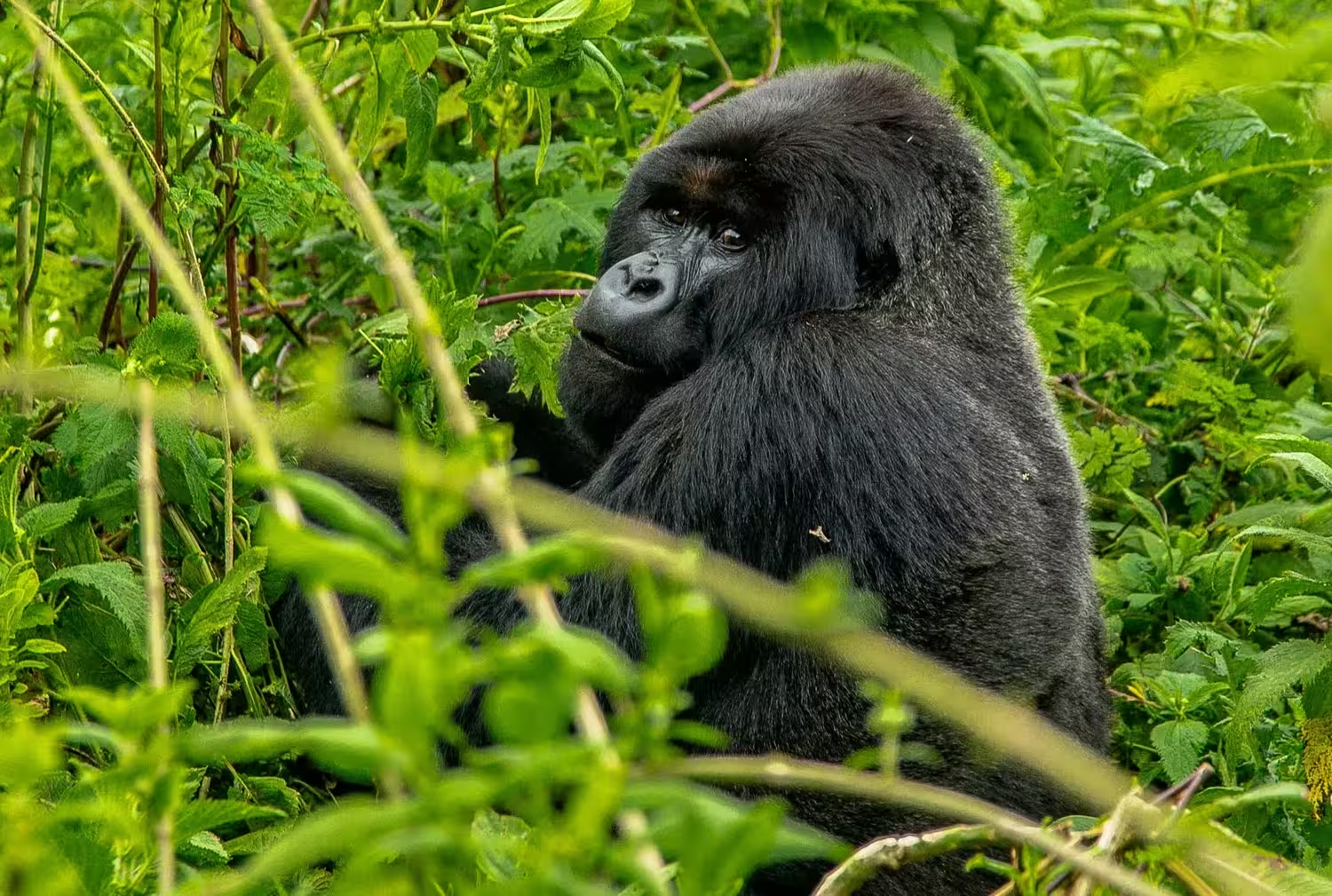
Types of Gorillas in Africa
African gorillas are divided into two main species: Eastern Gorilla and Western Gorilla. Each of these has two subspecies, adapted to different forest environments.
Eastern Gorilla
Found in the dense forests of Central and East Africa, Eastern gorillas are larger and darker than their western cousins. They include:
Mountain Gorilla
Where they live: Rwanda, Uganda, and eastern DR Congo
These gorillas live in misty, high-altitude forests like Bwindi and the Virunga ranges. They have thick, shaggy fur to stay warm in cold mountain weather. They live in tight family groups and feed mostly on leaves, bamboo shoots, and stems.
Eastern Lowland Gorilla (Grauer’s Gorilla)
Where they live: Eastern Democratic Republic of Congo
The largest gorilla subspecies, Grauer’s gorillas have massive bodies, short muzzles, and wide chests. They live in lowland tropical forests and feed on fruit, bark, and foliage. Despite their size, they are peaceful and social animals.
Western Gorilla
These gorillas live in the tropical rainforests of West and Central Africa. They are generally smaller, with lighter coats and more pronounced brow ridges.
Western Lowland Gorilla
Where they live: Cameroon, Central African Republic, Congo, Equatorial Guinea, and Gabon
This is the most common and widespread gorilla subspecies. They have brownish-gray fur and a reddish patch on the head. They love eating fruit and travel often in search of seasonal food.
Cross River Gorilla
Where they live: Border areas of Nigeria and Cameroon
This is the rarest and most endangered of all gorilla types. They live in a small, remote region and are very shy around humans. They look similar to western lowland gorillas but have shorter skulls and smaller populations.
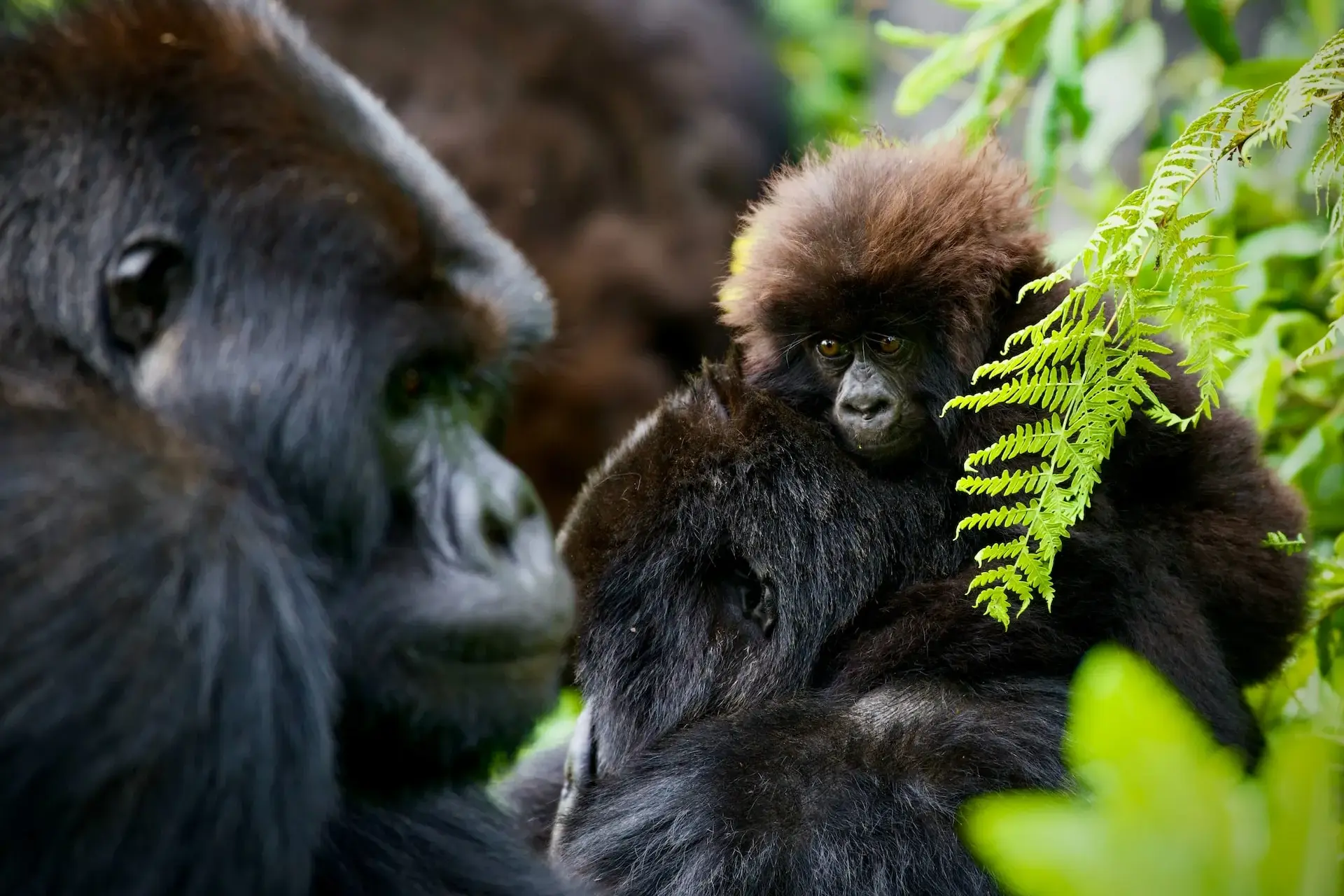
Quick Facts Table
| Characteristics | Description |
|---|---|
| Scientific Name | Gorilla gorilla (Western Gorilla) Gorilla beringei (Eastern Gorilla) |
| Conservation Status | Critically Endangered (Both Western & Eastern Gorilla species) |
| Habitat | Forests across central Sub-Saharan Africa (lowland rainforests, swamp forests, montane/cloud forests). |
| Diet | Primarily herbivorous (leaves, stems, shoots, bamboo, fruit); Western gorillas consume more fruit. |
| Average Weight | Males: 150 - 250 kg (330 - 550 lbs) or more Females: 70 - 120 kg (150 - 265 lbs) |
| Average Height | Males: Up to 1.8 meters (6 feet) standing upright Females: Slightly smaller |
| Lifespan | Wild: 35 - 40 years Captivity: Up to 50 years |
| Social Behavior | Live in social groups called "troops" or "bands," led by a dominant adult male (silverback). |
What Gorilla like to eat ?
Gorillas mostly eat plants. Their meals include leaves, stems, fruits, and soft shoots. Since they eat a lot of leaves, they are often called leaf-eaters. Gorillas also chew on bark and sometimes eat ants or small insects for extra nutrition. What they eat depends on the season and what plants are growing around them. Their diet may change from one place to another, but it stays mostly green and full of roughage.
Importance of Gorilla in africa
Gorillas hold a special place in many parts of Africa. For a long time, people have respected them for their strength, calm nature, and close family bonds. In some cultures, they are seen as wise, protective figures or even as family spirits. Many stories and beliefs are built around them.
In the past, gorillas were also part of the local economy. Some communities hunted them for meat or used their hides and bones for tools and other items. In a few places, people trained gorillas or kept them as a sign of wealth. While these uses have changed with time and awareness, they show how deeply connected people and gorillas have been across history.
10 Interesting facts about gorilla
- Gorillas share about 98 percent of their DNA with humans, making them one of our closest relatives in the animal world.
- A group of gorillas is called a troop or a band, usually led by one strong adult male known as a silverback.
- Silverbacks get their name from the patch of silver-gray hair on their back, which appears as they mature.
- Gorillas mostly walk on all fours using their knuckles, a style called knuckle-walking.
- Even though they look tough, gorillas are usually calm and gentle unless they feel threatened.
- They are shy animals and prefer to avoid trouble rather than fight.
- Gorillas use different sounds, gestures, and facial expressions to communicate with each other.
- Adult gorillas can eat up to 20 kilograms of plants a day, including leaves, stems, fruit, and bark.
- They build nests every night from branches and leaves to sleep in, either on the ground or in trees.
- Mountain gorillas live in the forests of central Africa, and thanks to conservation efforts, their numbers are slowly rising.
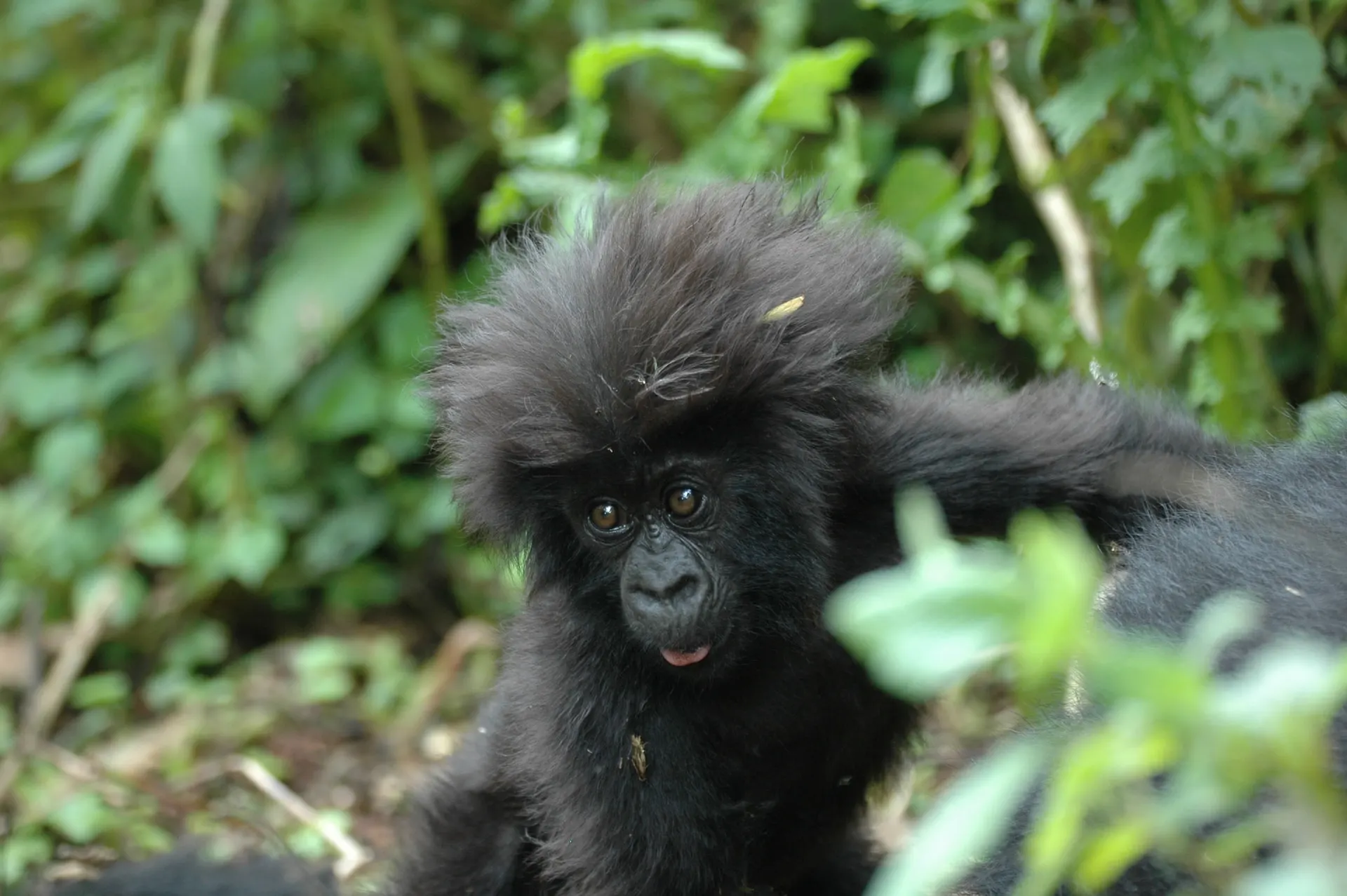
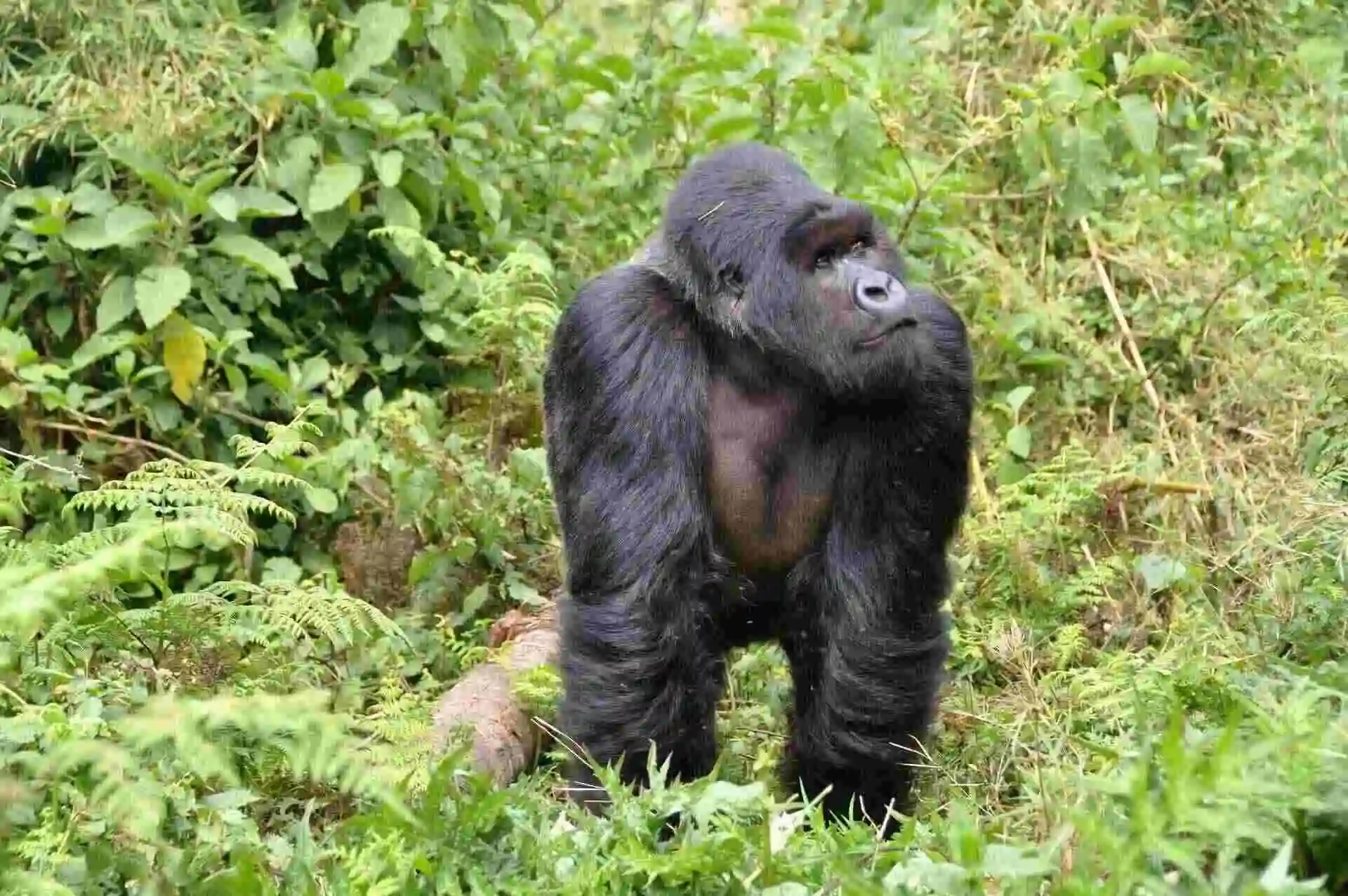
Gorilla Trekking Experience
Trekking to see gorillas in the wild is a once-in-a-lifetime adventure. The journey usually starts early in the morning with a short briefing at the park headquarters. From there, small groups set out into the forest, led by expert guides and trackers who know the gorillas’ recent movements.
The hike can last anywhere from 1 to 5 hours depending on where the gorilla family is located that day. The terrain can be muddy, hilly, and sometimes thick with vegetation, so it’s important to come prepared with the right gear. But every step is worth it once you get close.
Once your group reaches the gorillas, you’ll be allowed to stay for one full hour. During this time, you’ll watch them eat, groom, play, or rest. It’s a quiet, magical experience where you’ll feel part of their world for a short while. You must keep a respectful distance, usually around 7 meters – to protect both you and the gorillas from unnecessary stress or illness.
Trekking is safe, well-managed, and follows strict rules to ensure the safety of both wildlife and visitors. Park rangers and trackers are with you throughout, guiding your path and managing the encounter.
Important to know:
- Gorilla trekking permits are required and must be booked well in advance.
- Only a limited number of people are allowed to visit each gorilla family per day.
- Age restrictions apply most parks only allow visitors aged 15 and above.
If you’re planning to see gorillas in the wild, this experience is about patience, respect, and wonder. It’s not just a walk in the forest, it’s a chance to stand face-to-face with one of our closest relatives.
Top National Parks to spot Gorilla
If you want to see gorillas in the wild, Africa has a few amazing places where sightings feel almost magical.
- Bwindi Impenetrable Forest, Uganda: One of the best places to see mountain gorillas. The forest is thick, and the treks can be tough, but the reward is worth it.
- Mgahinga Gorilla National Park, Uganda: A smaller park but home to a few habituated gorilla families. It’s peaceful and perfect for quiet tracking.
- Volcanoes National Park, Rwanda: Famous for its mountain views and well-planned gorilla tracking. It’s one of the most popular parks for seeing gorillas up close.
- Virunga National Park, Democratic Republic of Congo: Offers a raw and thrilling experience. You can see both mountain gorillas and eastern lowland gorillas here.
Each park offers guided treks, limited group access, and strict rules to protect gorillas.


